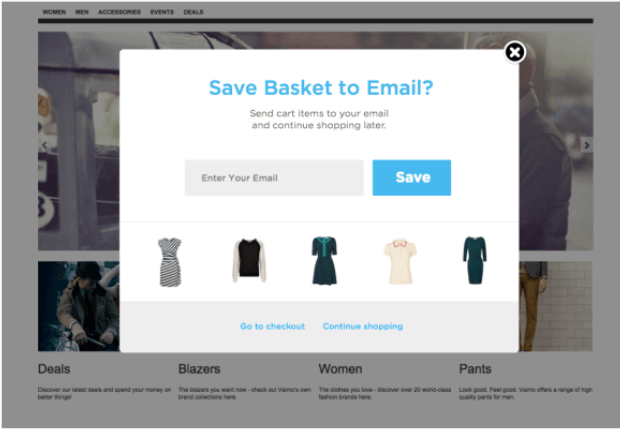Looking to boost revenue quickly in your organic channel? Here’s 5 areas you can work on to drive results sooner rather than later.
Table of Contents
Optimize Your Product Data Feed
Many businesses overlook the quality of their product data feed, even though it has a big impact on both your paid and organic search channels. Here’s some things to look at to make sure you are showing for both types of results for related searches.
- Craft unique and relevant product titles: Make sure your product titles accurately describe the product and include relevant keywords to make it easier for consumers to find your products when searching.
- Use high-quality images: Use clear, high-resolution images of your products to help consumers get a good sense of what they’re buying.
- Write detailed and accurate product descriptions: Include all relevant information about the product, such as size, material, and features, to help consumers make informed purchasing decisions.
- Assign unique product identifiers: Use unique product identifiers, such as UPC or EAN codes, to help prevent errors and ensure that your products are properly matched with other sources of product information.
- Organize product data into structured and consistent format: Make sure your product data is structured in a consistent format that can be easily understood by e-commerce platforms and other systems.
- Keep your product data feed up-to-date: Regularly update your product data feed with new products, pricing, and inventory information to ensure that consumers are seeing accurate information.
- Use appropriate categorization: Use relevant categories to group your products and make it easier for consumers to find what they’re looking for. Google provides a full list of categories here.
- Utilize product attributes: Use attributes such as color, size, and material to help consumers filter through your products more effectively. Make sure you feed Google as many of these as possible from their template.
- Use promotional pricing: use promotional pricing feature when it’s applicable.
- Use GTIN for global products: Global Trade Item Number (GTIN) is a unique product identifier that help retailers, manufacturers, and sellers to uniquely identify products. Use it if your product is sold globally. This will also help if you’re a true omni-channel and selling on Amazon or elsewhere.

Rework and Optimize Title and Meta Tags
Product meta titles and descriptions are important for SEO because they help search engines understand what your products are about and what they offer to users. Here are some tips for writing effective product meta titles and descriptions:
- Keep titles under 70 characters: The title of your product page is the most important piece of content for SEO. Keep it under 70 characters so that it doesn’t get cut off in search engine results.
- Include keywords: Use relevant keywords in your product titles and descriptions that accurately describe the product and the content of the page.
- Use unique titles: Each product page should have a unique title that accurately describes the product and sets it apart from other products.
- Use unique descriptions: Similarly, the description should be unique and provide a quick summary of the main features and benefits of the product.
- Use modifiers: Use modifiers such as “best,” “cheap,” or “reviews” to make your title stand out in search results and give users a clear idea of what to expect from the page.
- Avoid duplication: Avoid duplicating the same title or description across multiple product pages, or even across your website, as search engines may interpret it as an indication of low quality.
- Use Brand name: Consider including your brand name in the title for better brand recall.
- Include Call-to-action: Use call-to-action language, like “buy now” or “shop now” to encourage users to take action.
By following these guidelines, you can help ensure that your product meta titles and descriptions are optimized for SEO, making it more likely that your products will appear at the top of search engine results and drive more traffic to your website.
Aggressively Gather Emails & SMS
Email Sign-up Form: Include an email sign-up form prominently on your website, such as in the header or footer, to make it easy for visitors to subscribe to your mailing list.
Create a pop-up sign-up form: Use pop-up forms to capture email addresses as soon as a visitor lands on your website. You can set the form to display after a certain amount of time or when the visitor is about to exit the site.
Offer incentives: Offer incentives, such as discounts or exclusive promotions, to encourage visitors to sign up for your mailing list.
Use social proof: Use social proof, such as displaying the number of people who have already signed up or testimonials from satisfied customers, to increase trust and encourage visitors to sign up.
Optimize your Live chat: Incorporate live chat support on your site and ask visitors for their email addresses during the chat.
Use landing pages: Use landing pages to promote special offers or promotions and include an email sign-up form on the page to capture email addresses.
Use chatbot or conversational UI: Use chatbot or conversational user interface to capture email addresses in a non-intrusive way

Focus on On-Site Search
- Use relevant keywords: Make sure your products are tagged with relevant keywords that accurately describe the product, this will make it easier for customers to find what they’re looking for when searching.
- Use synonyms: Use synonyms in your product data and search algorithm, so customers can find what they’re looking for even if they don’t use the exact keyword.
- Use product attributes: Use product attributes such as color, size, and material, to help customers filter through your products more effectively and find exactly what they’re looking for.
- Use facets/filters: Provide facets/filters options so customers can quickly narrow down search results by price, brand, color, size, etc.
- Use spell-check and autocomplete: Use a spell-checker and autocomplete feature in your search bar to help customers find what they’re looking for, even if they make a typo or can’t spell the name of the product.
- Consider Natural Language Processing: Use NLP to enable customers to use natural language queries like “black dress size medium” instead of filtering through many options.
- Track and analyze search data: Track and analyze data on what customers are searching for and use that information to optimize your search algorithm and improve the relevancy of search results.
- Test and iterate: Constantly test and iterate the search experience, use A/B testing, customer feedback or heatmaps to understand which features are working and which are not.
Using Data to Visually Merchandise an Ecommerce Store for Higher Conversions
There are several ways you can use data to visually merchandise an e-commerce store:
Use data to understand which products are popular or trending, and display them prominently on your homepage or in other high-traffic areas.
Use data to identify patterns in customer behavior, such as which products are often purchased together, and use that information to create product bundles or cross-selling opportunities.
Use data to understand the demographics of your customers, and use that information to create targeted product recommendations or personalized product bundles.
Use data to track the performance of different product categories, and use that information to optimize your product categorization and navigation.
Use data to track the performance of different product images, and use that information to optimize your product photography and product image selection.
Use data to track the performance of different promotions and discounts, and use that information to optimize your pricing and promotional strategies.
By using data to inform your visual merchandising decisions, you can create a more engaging and effective shopping experience for your customers, and ultimately increase your sales.





